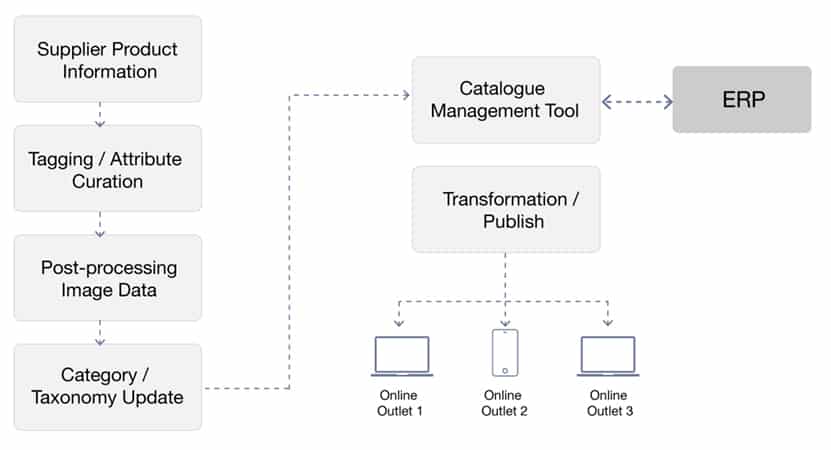In the post Covid era, having a presence in the eCommerce is a necessity for traditional retail commercial outlets. Customers today have multiple choices for online purchasing, and you will need a seamless and personalized experience for the buyers to retain them. This may sound daunting for a business trying to move online from a brick-and-mortar business, but the upside is that customers could be loyal if you can provide a pleasant experience. There are many aspects to this. We will try and address the most basic of the needs – Catalogue Management.
What is Catalogue Management?
It is an approach to organizing your product information and publishing them on a real-time basis to your eCommerce portal, or to multiple online outlets. This is the obvious first step in the move to eCommerce, because providing accurate, reliable, and timely information on products in an appealing and consistent manner is fundamental to the success of your business online.
But besides the basic and obvious reasons, a well-maintained catalogue can help you with building other applications that will boost your business’ RoI.
- Personalization: Making personal recommendations to customers based on buying behaviours.
- Pricing strategy: Understanding the price points that trigger the purchase of an item to improve business.
- Competitive intelligence: It helps to understand how your competition is pricing the products for a competitive pricing strategy.
All of the above will need sophisticated algorithms and could be built once we ensure a solid foundation with a comprehensive Catalogue Management process. We have given here some of the best practices for Catalogue management.
Best Practices for Catalogue Management
- Product Tagging and Attribute curation: For making the choice of a product, the customer will need to search and filter for specific features. This will need the product to be appropriately tagged with all the relevant attributes. For example, if a customer is looking for a bedspread, besides the obvious attributes like size, material and colour, the customer will also be interested in the pattern and washability too. It is important that the catalogue is tagged comprehensively. It is also important to ensure that the product attributes are normalized across the different categories. The product also needs to be placed in the appropriate Category in the Taxonomy.
- Enhance Visual appeal: The first impression is made with the image(s) of the product. It is important to ensure that the product being sold stands out visually with no distracting background information. This needs the images guidelines for product image collection and post-processing.
- Map the Catalogue Management Process: This involves ensuring that the product goes through the entire process from the supplier to the online marketplace seamlessly with minimal latency or delay.

- Select a Catalogue Management Tool: It is very important to ensure that all of your post-processed catalogue data for all products across the company is available in a single Catalogue Management Tool. Depending on your needs, this can be a Bespoke solution or a Product Information System.
- Select a partner to handle the Catalogue: In spite of all the automation being built-in, working with the various product vendors, supply chain / inventory and updates to products to keep the catalogue up to date with minimal latency is a complex manual process. It is important that you have a partner who has a significant experience in handling this to manage your Catalogue.

